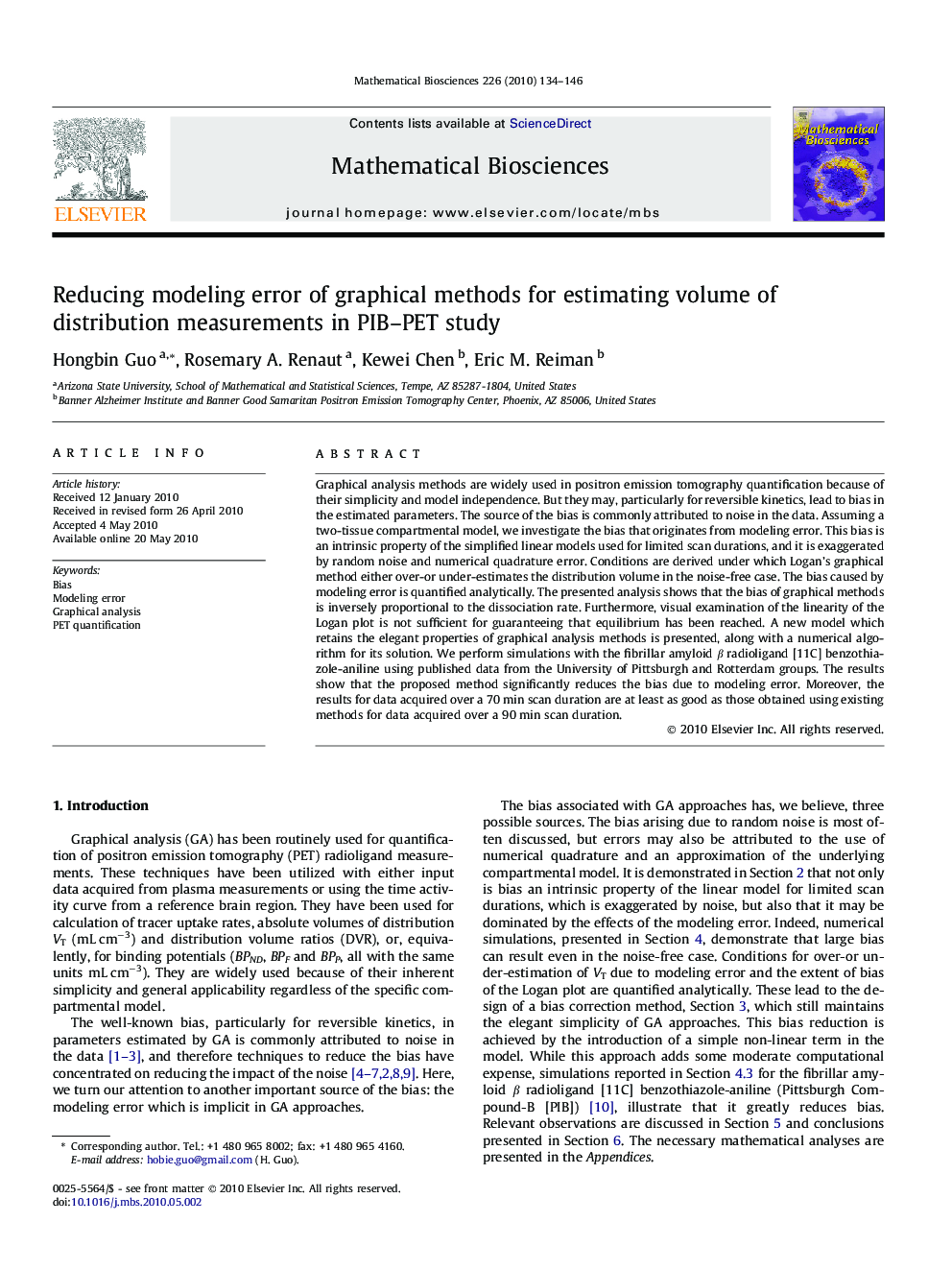| Article ID | Journal | Published Year | Pages | File Type |
|---|---|---|---|---|
| 4500643 | Mathematical Biosciences | 2010 | 13 Pages |
Abstract
Graphical analysis methods are widely used in positron emission tomography quantification because of their simplicity and model independence. But they may, particularly for reversible kinetics, lead to bias in the estimated parameters. The source of the bias is commonly attributed to noise in the data. Assuming a two-tissue compartmental model, we investigate the bias that originates from modeling error. This bias is an intrinsic property of the simplified linear models used for limited scan durations, and it is exaggerated by random noise and numerical quadrature error. Conditions are derived under which Logan's graphical method either over-or under-estimates the distribution volume in the noise-free case. The bias caused by modeling error is quantified analytically. The presented analysis shows that the bias of graphical methods is inversely proportional to the dissociation rate. Furthermore, visual examination of the linearity of the Logan plot is not sufficient for guaranteeing that equilibrium has been reached. A new model which retains the elegant properties of graphical analysis methods is presented, along with a numerical algorithm for its solution. We perform simulations with the fibrillar amyloid β radioligand [11C] benzothiazole-aniline using published data from the University of Pittsburgh and Rotterdam groups. The results show that the proposed method significantly reduces the bias due to modeling error. Moreover, the results for data acquired over a 70 min scan duration are at least as good as those obtained using existing methods for data acquired over a 90 min scan duration.
Related Topics
Life Sciences
Agricultural and Biological Sciences
Agricultural and Biological Sciences (General)
Authors
Hongbin Guo, Rosemary A. Renaut, Kewei Chen, Eric M. Reiman,
